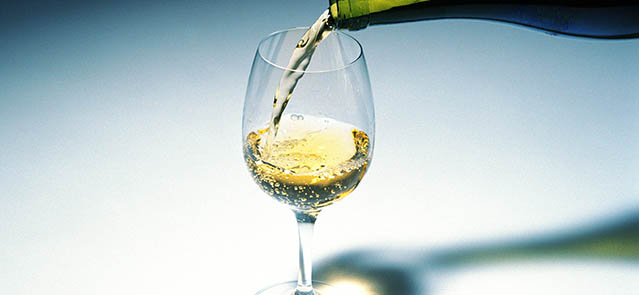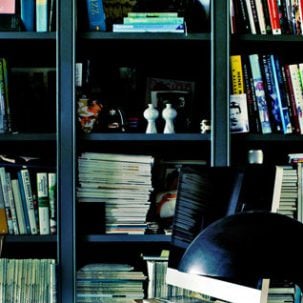Everything you need to know about wine glasses
January 31, 2017
If you want to enjoy the full experience of drinking wine, you need the right glass. Wine expert and presenter of our fine wine video series Tom Harrow looks at the shapes and brands to consider when choosing your glassware

Photo: Alamy
There are as many types of wine glass on the market as there are styles of wine, but don’t let that intimidate you. When it comes to enjoying a glass there are a few things to observe.
Let your wine breathe
Firstly, let’s talk about decanting. Just pulling the cork out of the bottle isn’t enough as you only expose a quantity of wine the size of 1p coin. Decanting helps to aerate the wine, softening the harsher acids and tannins, and ensuring that any sediment stays in the bottle. Think of wine as a world class athlete – it needs to stretch before it can perform. As a rule of thumb the quality of the vintage is more important than the age with regards to the length of time it needs to breathe.
Larger glasses such as Riedel or Zalto Burgundy, can act as mini-decanters themselves. Pouring the wine from a decent height helps to get plenty of air into the glass, bringing the qualities of the wine to life. It will also ensure the alcohol component of the wine stays mixed in the liquid rather than settling on the surface.
The many types of wine glass
The glass you choose can create the best tasting experience. A large bowl means that a larger surface of the wine is exposed to air, letting the ethanol evaporate and collecting more aromas in the glass from the exposed area. In smaller bowls, less of the wine comes in contact with air, preserving the floral notes and keeping the wine cool.
One very important aspect is the transfer of liquid from vessel to mouth. This needs to be seamless to taste even the subtlest notes and flavours. The shape of the glass dictates the direction of the wine (be it straight to the back of the mouth for bolder reds, or to the front and sides of the mouth for delicate whites), so that the drinker fully captures taste and texture.
The three most popular types of wine glass are red, white and flutes. When used with the right wines, the first two are the only ones you need to know and own. What is essential in all cases is that the glasses are wider in the middle than at the rim – tulip or bowl-shaped to one degree or another.
Red wines are usually served in larger glasses, allowing the wine to breathe more, and the aromas to develop. Even within this category, there are a few subgroups, depending on the richness and body of the wine. A wider glass will soften the punchier tannins and spiciness and make more concentrated wine taste smoother. The aperture of the glass is important too – a narrow opening will concentrate more subtle wines whereas a broader one will help to diffuse more concentrated wines.
White wine glasses tend to be more narrow, bringing the wine closer to the nose and delivering more aromas. They also keep the wine cooler due to the smaller quantity of wine exposed to the air.
Flutes are still very popular for champagne and sparkling wines, and even saucers have enjoyed something of a renaissance, however increasingly producers prefer much wider bowls on their glasses, many of which more closely resemble white wine glasses. We have certainly come a long way from schooners of sherry, Paris goblets and flimsy champagne flutes, none of which allow wines of quality to show their complex characters.
My advice is to treat champagne as a normal wine and serve it in a white wine glass or at least a large flute. It may surprise you, but the same goes for fortified wines such as sherry and port – they taste much better when served in a white wine glass rather than a traditional fortified wine thimble.

Photo: Alamy
Where to spend your money
If you want to invest in good quality glassware, go for the established brands like Zalto, Riedel, Spiegelau, Schott Zwiesel – all offer a varied range of vessels for any occasion, as well as being beautifully designed and resistant to breakage.
Established in 1756, Riedel has a long heritage of producing the finest crystal glassware. Unsurprisingly, its slogan is ‘The Wine Glass Company’. Spiegelau is part of the same family as Riedel, while Schott Zwiesel uses its trademarked Tritan®crystal, one of the most dishwasher safe types of crystal glass in the world, which makes it very popular with bars and restaurants.
Zalto is fairly new to the market but has made an impression since the beginning. Each glass is mouth blown and, unusually but significantly, the stem and bowl are formed together. This and subsequent slow cooling mean that despite looking as fragile as new born fawns, they are as tough and unbreakable as Wolverine.
The glass is so thin that the wine is transmitted into your mouth almost as though the walls had just melted away. The brand has already gathered prominent supporters – among them the FT’s Jancis Robinson, who says, ‘What I love is that Zalto glasses are the thinnest and most delicate glasses I have come across, yet seem springy and almost elastic in the hand’, and Decanter’s Andrew Jefford who comments, ‘these are, truly, the best I’ve ever used’.
Wine Chap’s wine glass recommendations
Schott Zwiesel Audience Champagne Flute – for quality fizz of all descriptions, I think you can also get away with these for dessert wines as they are not too tall.
Spiegelau Authentis White Wine Glass – some white wine glasses can be a little insubstantial but this has a more generous bowl.
Riedel Vinum Syrah/Shiraz Glass – for Bordeaux, Rhone, Brunello and Cabernets and Syrahs from the New World. These are slightly taller and to my mind more elegant than the Bordeaux glasses in the same range. They also offer a sufficient point of difference to the…
Zalto Burgundy Glass – for Burgundy and all Pinot Noir, Barolo, older Rioja and Northern Rhone Syrah especially.
Tom Harrow is the wine director at Honest Grapes and goes by the name of WineChap on Instagram and Twitter






 Very satisfied with the service from Hiscox as always
Very satisfied with the service from Hiscox as always

